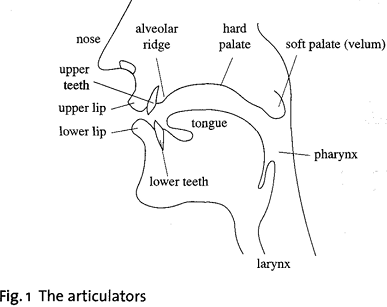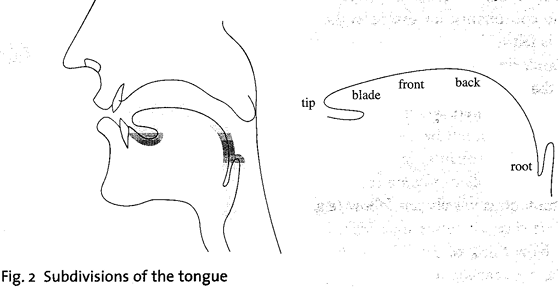

Grammar


Tenses


Present

Present Simple

Present Continuous

Present Perfect

Present Perfect Continuous


Past

Past Simple

Past Continuous

Past Perfect

Past Perfect Continuous


Future

Future Simple

Future Continuous

Future Perfect

Future Perfect Continuous


Parts Of Speech


Nouns

Countable and uncountable nouns

Verbal nouns

Singular and Plural nouns

Proper nouns

Nouns gender

Nouns definition

Concrete nouns

Abstract nouns

Common nouns

Collective nouns

Definition Of Nouns

Animate and Inanimate nouns

Nouns


Verbs

Stative and dynamic verbs

Finite and nonfinite verbs

To be verbs

Transitive and intransitive verbs

Auxiliary verbs

Modal verbs

Regular and irregular verbs

Action verbs

Verbs


Adverbs

Relative adverbs

Interrogative adverbs

Adverbs of time

Adverbs of place

Adverbs of reason

Adverbs of quantity

Adverbs of manner

Adverbs of frequency

Adverbs of affirmation

Adverbs


Adjectives

Quantitative adjective

Proper adjective

Possessive adjective

Numeral adjective

Interrogative adjective

Distributive adjective

Descriptive adjective

Demonstrative adjective


Pronouns

Subject pronoun

Relative pronoun

Reflexive pronoun

Reciprocal pronoun

Possessive pronoun

Personal pronoun

Interrogative pronoun

Indefinite pronoun

Emphatic pronoun

Distributive pronoun

Demonstrative pronoun

Pronouns


Pre Position


Preposition by function

Time preposition

Reason preposition

Possession preposition

Place preposition

Phrases preposition

Origin preposition

Measure preposition

Direction preposition

Contrast preposition

Agent preposition


Preposition by construction

Simple preposition

Phrase preposition

Double preposition

Compound preposition

prepositions


Conjunctions

Subordinating conjunction

Correlative conjunction

Coordinating conjunction

Conjunctive adverbs

conjunctions


Interjections

Express calling interjection

Phrases

Sentences


Grammar Rules

Passive and Active

Preference

Requests and offers

wishes

Be used to

Some and any

Could have done

Describing people

Giving advices

Possession

Comparative and superlative

Giving Reason

Making Suggestions

Apologizing

Forming questions

Since and for

Directions

Obligation

Adverbials

invitation

Articles

Imaginary condition

Zero conditional

First conditional

Second conditional

Third conditional

Reported speech

Demonstratives

Determiners


Linguistics

Phonetics

Phonology

Linguistics fields

Syntax

Morphology

Semantics

pragmatics

History

Writing

Grammar

Phonetics and Phonology

Semiotics


Reading Comprehension

Elementary

Intermediate

Advanced


Teaching Methods

Teaching Strategies

Assessment
The production of speech sounds Articulators above the larynx
المؤلف:
Peter Roach
المصدر:
English Phonetics and Phonology A practical course
الجزء والصفحة:
19-1
2024-10-10
1449
Articulators above the larynx
All the sounds we make when we speak are the result of muscles contracting. The muscles in the chest that we use for breathing produce the flow of air that is needed for almost all speech sounds; muscles in the larynx produce many different modifications in the flow of air from the chest to the mouth. After passing through the larynx, the air goes through what we call the vocal tract, which ends at the mouth and nostrils; we call the part comprising the mouth the oral cavity and the part that leads to the nostrils the nasal cavity. Here the air from the lungs escapes into the atmosphere. We have a large and complex set of muscles that can produce changes in the shape of the vocal tract, and in order to learn how the sounds of speech are produced it is necessary to become familiar with the different parts of the vocal tract. These different parts are called articulators, and the study of them is called articulatory phonetics.
Fig. 1 is a diagram that is used frequently in the study of phonetics. It represents the human head, seen from the side, displayed as though it had been cut in half. You will need to look at it carefully as the articulators are described, and you will find it useful to have a mirror and a good light placed so that you can look at the inside of your mouth.
i) The pharynx is a tube which begins just above the larynx. It is about 7 cm long in women and about 8 cm in men, and at its top end it is divided into two, one part being the back of the oral cavity and the other being the beginning of the way through the nasal cavity. If you look in your mirror with your mouth open, you can see the back of the pharynx.

ii) The soft palate or velum is seen in the diagram in a position that allows air to pass through the nose and through the mouth. Yours is probably in that position now, but often in speech it is raised so that air cannot escape through the nose. The other important thing about the soft palate is that it is one of the articulators that can be touched by the tongue. When we make the sounds k, g the tongue is in contact with the lower side of the soft palate, and we call these velar consonants.
iii) The hard palate is often called the "roof of the mouth". You can feel its smooth curved surface with your tongue. A consonant made with the tongue close to the hard palate is called palatal. The sound j in 'yes' is palatal.
iv) The alveolar ridge is between the top front teeth and the hard palate. You can feel its shape with your tongue. Its surface is really much rougher than it feels, and is covered with little ridges. You can only see these if you have a mirror small enough to go inside your mouth, such as those used by dentists. Sounds made with the tongue touching here (such as t, d, n) are called alveolar.
v) The tongue is a very important articulator and it can be moved into many different places and different shapes. It is usual to divide the tongue into different parts, though there are no clear dividing lines within its structure. Fig. 2 shows the tongue on a larger scale with these parts shown: tip, blade, front, back and root. (This use of the word "front" often seems rather strange at first.)
vi) The teeth (upper and lower) are usually shown in diagrams like Fig. 1 only at the front of the mouth, immediately behind the lips. This is for the sake of a simple diagram, and you should remember that most speakers have teeth to the sides of their mouths, back almost to the soft palate. The tongue is in contact with the upper side teeth for most speech sounds. Sounds made with the tongue touching the front teeth, such as English T, D, are called dental.

vii) The lips are important in speech. They can be pressed together (when we produce the sounds p, b), brought into contact with the teeth (as in f, v), or rounded to produce the lip-shape for vowels like u:. Sounds in which the lips are in contact with each other are called bilabial, while those with lip to-teeth contact are called labiodental.
The seven articulators described above are the main ones used in speech, but there are a few other things to remember. Firstly, the larynx (which will be studied later) could also be described as an articulator - a very complex and independent one. Secondly, the jaws are sometimes called articulators; certainly we move the lower jaw a lot in speaking. But the jaws are not articulators in the same way as the others, because they cannot themselves make contact with other articulators. Finally, although there is practically nothing active that we can do with the nose and the nasal cavity when speaking, they are a very important part of our equipment for making sounds (which is sometimes called our vocal apparatus), particularly nasal consonants such as m, n. Again, we cannot really describe the nose and the nasal cavity as articulators in the same sense as (i) to (vii) above.
 الاكثر قراءة في Phonetics and Phonology
الاكثر قراءة في Phonetics and Phonology
 اخر الاخبار
اخر الاخبار
اخبار العتبة العباسية المقدسة

الآخبار الصحية















 قسم الشؤون الفكرية يصدر كتاباً يوثق تاريخ السدانة في العتبة العباسية المقدسة
قسم الشؤون الفكرية يصدر كتاباً يوثق تاريخ السدانة في العتبة العباسية المقدسة "المهمة".. إصدار قصصي يوثّق القصص الفائزة في مسابقة فتوى الدفاع المقدسة للقصة القصيرة
"المهمة".. إصدار قصصي يوثّق القصص الفائزة في مسابقة فتوى الدفاع المقدسة للقصة القصيرة (نوافذ).. إصدار أدبي يوثق القصص الفائزة في مسابقة الإمام العسكري (عليه السلام)
(نوافذ).. إصدار أدبي يوثق القصص الفائزة في مسابقة الإمام العسكري (عليه السلام)


















